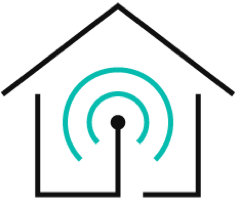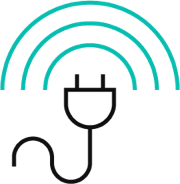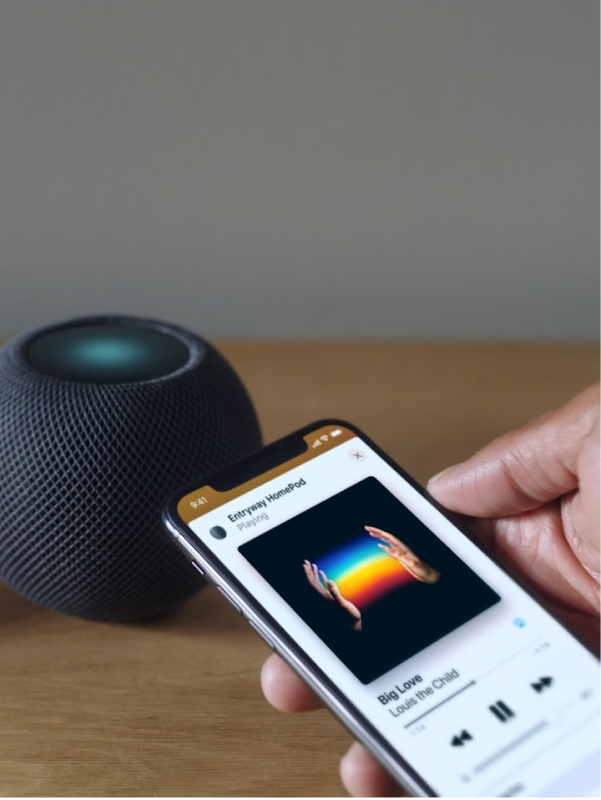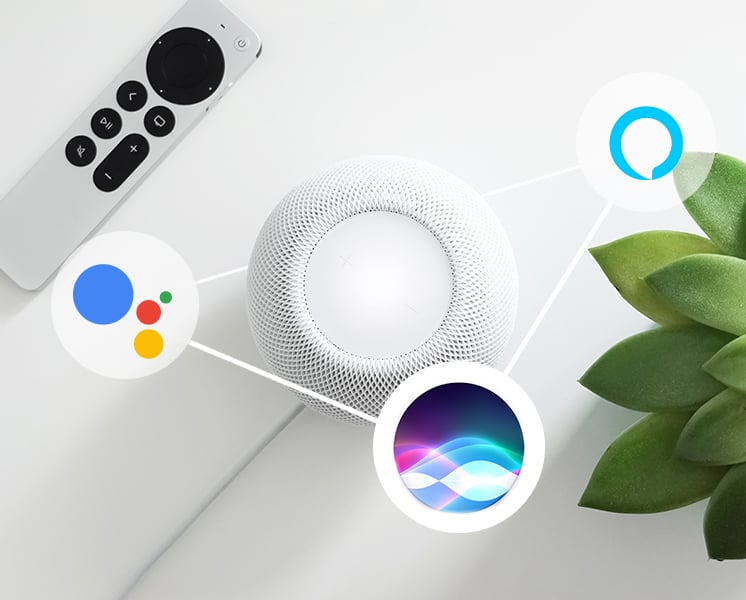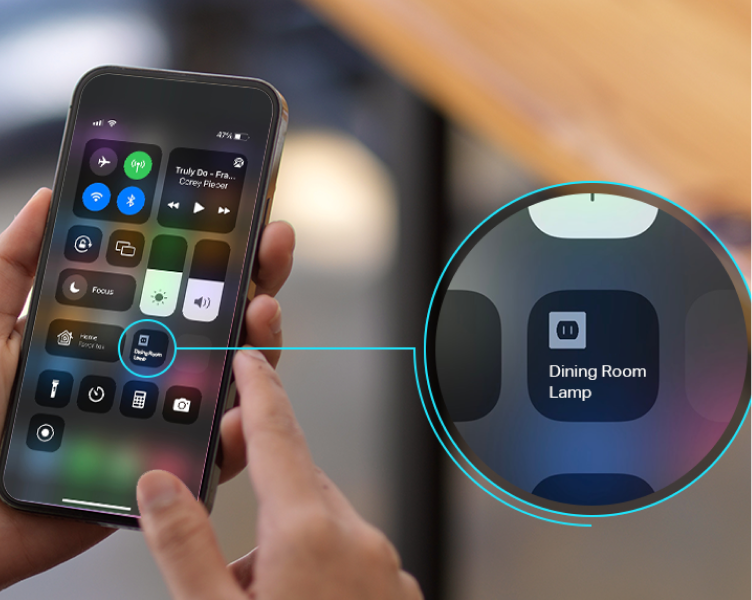You will require one of the top smart home hubs as you add more intelligent home gadgets. You can control all your gadgets, including lights, locks, garage door openers, thermostats, cameras, and more, from a smart home hub.
A smart home hub enables you to link every single appliance. For instance, a smart home hub can instruct your lights to switch off and your thermostat to enter eco mode when your smart lock is locked. It's a vital tool for building an innovative, automated home.
A competent smart home hub can perform many additional things, although some are more effective than others. We tested the available smart home hubs to let you know the best.
Not a smart home hub, but Evvr HomeKit In-Wall Relay Switch is a bridge that turns traditional switches into smart ones. It has no-neutral, HomeKit smart lighting products. It allows you to control your smart devices remotely via the slick Evvr App.
- HomePod vs. HomePod mini - Face Off
- Amazon Echo - Brass Tacks
- Connect HomePod And HomePod mini With HomeKit
- FAQs of HomePod and HomePod mini
HomePod vs. HomePod mini - Face Off
With a new spherical appearance and the S5 chip, Apple launched the HomePod mini in 2020 as the first addition to the successful HomePod series. The HomePod mini is a far more accessible and adaptable HomePod in a smaller package, and it has a more reasonable price tag of just $99 as well.
Apple has already stopped selling the original HomePod, but it is still available from specific independent merchants for about $299. Should you still choose the new HomePod mini over the larger, original HomePod, which costs roughly three times as much? Our article explains the variations between the two HomePods and guides how to choose the one that might be most suitable for you.
In this section, we will compare Apple's two options and then look at Amazon Echo to help you buy the best smart home hub.

Design Aesthetics
The HomePod mini is substantially smaller than the original HomePod, which stands just under seven inches tall and is only 3.3 inches wide. While the original HomePod has a more significant, capsule-like form, the HomePod mini also has a small, spherical shape. The HomePod has more internal components than the HomePod mini. That's why it offers a richer audio experience.
Apple's mesh material, which is audio-conductive, is applied to both devices. The Siri waveform, which appears on the top display to signify when Siri is active, and built-in touch controls for volume are also shared by the HomePod and HomePod mini. Both HomePods are non-portable because they both rely on a connected power cable.
Audio Technology
The biggest significant difference between the two HomePods is in the audio hardware. Deep bass and precise high frequencies are made possible by the HomePod mini's single full-range speaker, driven by a neodymium magnet and two force-canceling passive radiators.
The HomePod, on the other hand, has a sizable, Apple-designed woofer for powerful, clear bass and a unique array of seven beam-forming tweeters that deliver clear high-frequency acoustics, each with its amplifier and directional control.
Both gadgets employ an acoustic waveguide created by Apple to send sound down and out toward the speaker's bottom for a fully immersive 360-degree audio experience. Because of this, consumers can position HomePod practically anywhere in a space and still get a consistent sound.
SoC And Software
The A8 chip from the iPhone 6, iPad mini 4, and Apple TV HD powers the HomePod, while the S5 chip from the Apple Watch Series 5 and Apple Watch SE powers the HomePod mini.
The HomePod's processor uses sophisticated software for echo cancellation, audio beam-forming, and real-time acoustic modeling.
The processor in the HomePod mini boosts the performance of its less powerful audio hardware. The Apple S5 chip in the HomePod mini uses cutting-edge software to analyze the music's distinctive qualities and apply sophisticated tuning models to optimize loudness, adjust the dynamic range, and control the driver's and passive radiators' movement in real-time to produce big sound from a small design.
Spatial Awareness
The original, bigger HomePod employs spatial awareness to determine where it is in the space. This enables it to automatically optimize the audio for better sound quality based on where in the room it is located. The HomePod employs its directional tweeters and ability to recognize walls and corners to distribute sound uniformly throughout the space while minimizing distortion and echo.
Spatial awareness is a function exclusive to the original HomePod and not available on the HomePod mini.
Stereo Sound
A second HomePod can expand the soundstage of your audio system for more prosperous, encompassing sound. With the ability to separate the ambient and direct energy, each HomePod can play its left or right sound channel. Automatic detection and balancing of two speakers utilizing both direct and reflected audio is possible with both devices. Even though the two speakers work together, only one HomePod answers Siri inquiries because of how the devices talk to one another.
>> How to connect HomePod to WiFi
Amazon Echo - Brass Tacks
The Amazon Echo (4th generation) is the finest smart home hub for most people because it has Bluetooth, Wi-Fi, and Zigbee. Many low-power smart home devices can connect to it thanks to its many radios, and Alexa's routines are pretty advanced, allowing you to employ a variety of triggers to activate other smart home devices automatically. It also integrates with Alexa Guard, which may switch on your lights and alert you in the event of an emergency, as well as listen for glass shattering and smoke alarms.
Design & Looks
The fourth-generation Echo is a near-sphere available in black, blue, or white, and it is 5.2 inches tall and 5.7 inches wide. In its Echo speakers, Amazon says that the fabric and aluminum are made entirely of recyclable materials. It's a cute new style that resembles Apple's upcoming HomePod mini.
When you speak your preferred wake word for Alexa, the light ring, previously located on top of the speaker, now shines more subtly from the base. The volume up, down, and mic mute controls are on the top panel. The power adapter port and a 3.5mm audio output are on the back.
Alexa
Of course, the Amazon Alexa speech assistant is also available through the fourth-generation Echo. Ask the assistant to carry out your desired task after calling it with the wake word "Alexa" (or one of the other options available). Alexa can play music from Amazon Music, Apple Music, Spotify, or SiriusXM; provide general information like sports scores and weather; control a variety of smart home devices (including Zigbee devices thanks to the built-in hub), and make voice calls in addition to phone calls to other Alexa devices in your home.
>> HomeKit vs Google Home vs Alexa, what's the difference?
Audio Performance
The Echo is physically smaller than the Google Nest Audio, but because its woofer and tweeters are more extensive, it has more power to output. Although this little speaker won't produce floor-rattling bass, low frequencies sound well-rounded and rich, as demonstrated by our bass test track. The kick drum beats offer a satisfying thud that avoids sounding too poppy or punchy while not being low enough to be physically audible.
Connect HomePod And HomePod mini With HomeKit
If you've never used HomeKit before and bought a HomePod, it is automatically added to HomeKit and the Home app when configured.
In the setup process, you are prompted to select the home you will use, HomePod. If you don't already have Home settings, you can select the "My Home" option, which is set up for each iCloud account. If your current home has a different name, you can choose it if you already utilize HomeKit, as I do.
The next step, also a HomeKit setup phase, is selecting the room where your HomePod is situated. If you've ever used HomeKit, you'll be familiar with this.

FAQs of HomePod and HomePod mini
Do Apple HomePod and HomePod mini work with Alexa?
The music you want to listen to may be found with Alexa from practically any music service, not just the few that work with the HomePod mini. When you ask the Echo Dot to perform a command, it will understand it as long as you have linked your account to the Alexa app.
Can a HomePod mini be a home hub?
HomePod mini and HomePod* instantly become home hubs when they are set up. Ensure that the Apple ID you used to configure your HomeKit accessories in the Home app is logged in to iCloud on your iPhone or iPad.
Can you use a HomePod mini without an iPhone?
Each user requires a unique Apple ID, iPhone, iPad, or iPod touch, and membership in the home via the Home app. You can program Siri and HomePod to recognize your voice so you can listen to music personalized to your tastes, send and read messages, place calls, and more.
Evvr In-Wall Relay Switch - HomeKit-Enabled Product
If you crave control of your home appliances and devices, Evvr HomeKit In-Wall Relay Switch converts a traditional switch into a smart switch. It is secure and fast and allows you to remotely control your bright lights and other fixtures through the Evvr smartphone app. Partner up with us and enjoy the perks of smart homes today!

